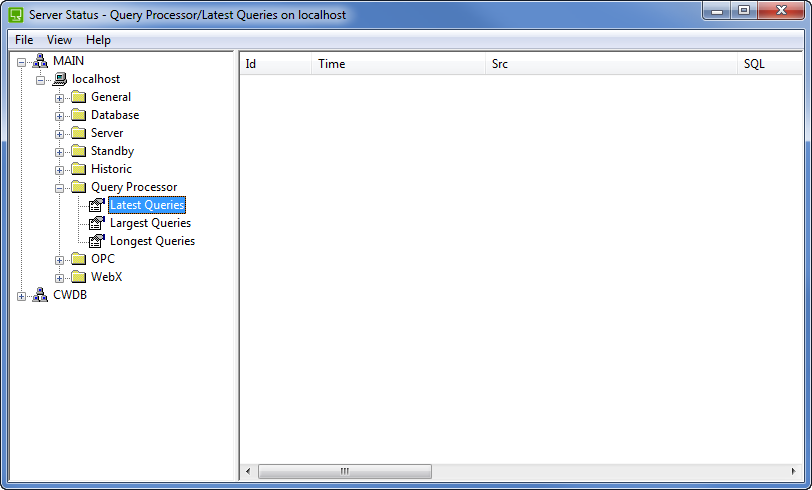The Latest Queries category shows a list of the most recent queries. The columns provide information about each query including:

- Id—The identifier number allocated to the query connection. The queries are numbered in order (according to the age of the query connection—the oldest connections have the lowest numbers).
- Time—The time at which the data that is specified in the SQL query was requested.
- Src—The number of different database tables being used by the connection.
- SQL—The SQL query.
- Parse—The time taken to interpret (parse) the SQL query.
- Verify—The time taken to check that the SQL query is valid.
- Optimize—The time taken to make the SQL query more efficient (where possible).
- Execute—The time taken to execute the SQL query. This is performed after the Parse, Verify, and Optimize operations.
- Exec Count—The number of times the query was executed.
- Rows—The number of rows returned by the query.
- Access Paths—The type of optimization that has been used. This can be:
- Non-Unique by Column—A query of a column in another table. The query is searching for values that may appear in multiple rows of the table being searched.
- Unique by Column—A query of a column in another table. The query is searching for a specific value that can only appear in one row of the column, such as an Id or FullName.
- Non-Unique by Value—A query searching for a specific value that is defined in the query. The value is non-unique - it may appear in multiple rows in the table being searched.
- Unique by Value—A query searching for a specific value that is defined in the query. The value is unique - it can only appear in one row of the table being searched.
- Scan—A query that searches each of the rows in a table. This type of query is usually inefficient and may result in a high load on the server. As a result, it can cause slow system performance.
- These Access Paths can also have a (Constrained) suffix. The (Constrained) suffix indicates that the optimizer has detected other constraints in the query that further reduce the number of records to be searched.
Schneider Electric staff may use the Access Path information when investigating abnormal conditions that may relate to the query processor. They may also use the statistics in the Largest Queries and Longest Queries categories.